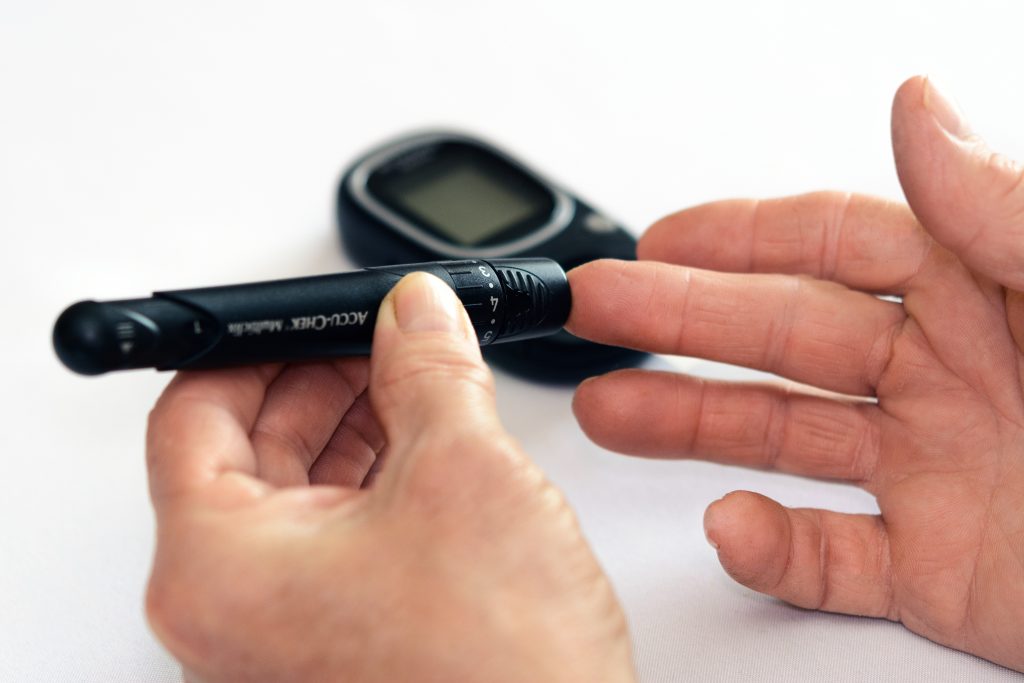
Have you ever wondered what blood tests you need to determine if your nutritional needs are met? That is the question I recently received from a reader who also happens to be a very good friend of mine (Thank you, Lloyd!).
In order to get the most up-to-date information, I went straight to Dr. Dawna Venzon, PhD, RD. She is one of our resident nutrition experts here in Buena Park, California.
Dawna is full of energy and extremely passionate about optimal health, especially healthy eating. She is also a Principal Research Scientist for the Nutrilite™ brand. With talent and passion like hers behind the brand, it’s easy to see why people around the world consider Nutrilite products the best nutritional supplements around.
Dawna shared with me the challenges with today’s blood tests, what developments are on the horizon and, importantly, what we all can do right now to make sure we prime our bodies with optimal levels of nutrients. It’s all good information that I’m eager to share with you. Read on to learn more.
Is there a simple way to test whether you are getting enough nutrients?
“Unfortunately, the answer is largely no,” says Dawna. She explains that the status of only a few nutrients like vitamin A or iron can be assessed through something as simple as a finger stick and a dried blood spot.
But those are the exception. In reality, using blood tests to monitor nutrient status is quite difficult. Although scientists are developing new techniques to make nutrient assessment easier and even avoid blood tests altogether by using measurements in the skin, eyes or other tissues. It’s certainly an exciting area of research.

Why is it so difficult to measure nutrients?
“The mystery,” says Dawna, “is largely because nutrients exist in such small quantities in the body, and we still need sophisticated analytical techniques to detect and measure them.” She points to three main factors that make monitoring nutrient status complicated.
First, blood levels don’t always represent true nutrient status because nutrients are often stored in tissues and only released into the blood when needed. Calcium is a good example. While calcium is critical for bone health, it is even more important as an electrolyte in the blood. To maintain blood calcium, the body may pull calcium from bones, but this can compromise bone health. So, measuring the blood level of calcium might not be a reliable measure of whether or not calcium storage is adequate. In these cases, more complicated tests need to be done to evaluate nutrient status beyond what can be measured in the blood.
Second, the term “adequate” as it relates to nutrient levels is still being defined, and it continues to be a subject of debate among nutrition experts. One big challenge is most of the recommendations for vitamins and minerals are set based on what happens in the body during nutrient depletion. Adequate daily intakes are set to avoid the well-documented signs and symptoms of nutrient deficiency. On the other hand, little is known about higher amounts, amounts that not only allow us to avoid deficiency, but also help us maintain optimal health.
Recommendations for vitamin D intake are a good example. In the U.S., the recommended intake was originally set to avoid rickets based on a certain blood level of a vitamin D metabolite. Since then, however, a growing body of research shows these levels are too low for most people, so the recommended intake for vitamin D has been increased. Still, experts continue to debate whether this increase is enough for optimal health.
Finally, some nutrients that are critical for health have yet to be determined essential so an adequate intake has yet to be established. Phytonutrients fall into this group. Lutein is a good example. Lutein is a well-known phytonutrient found in dark green, orange and yellow plants. When we eat these plants, the lutein accumulates in our eyes where it helps protect our vision as we age.
“A few progressive countries have dietary recommendations for phytonutrients like lutein,” says Dawna, “but we still need to find better standards to confirm what normal or adequate blood levels are.”

If we can’t measure, how do we know if we’re getting enough nutrients?
“One of the best ways to make sure you get enough nutrients is to eat a balanced diet with plenty of vegetables and fruit,” says Dawna. If you’re unsure about the quality of your diet, you can also see a Registered Dietitian for a comprehensive diet assessment.

You can also monitor the quality of your diet by using free resources such as the USDA’s choosemyplate.gov.
Dawna also points out that the Nutrilite™ Supplement Recommender is a fantastic and simple way to evaluate your diet and lifestyle for nutrition needs and to find Nutrilite supplements that can help met your individual needs. Plus, the tool is currently being updated to make it even better and more personalized.
Of course, a great way to close any potential nutrient gaps in your diet is to include a high-quality multivitamin like Double X in your daily routine. This habit not only helps you eliminate any vitamin and mineral gaps, but helps close any phytonutrient gaps as well.

Knowledge is power
I can’t thank the good doctor enough for sharing her insights with me. For me, knowledge is power. The more you learn, the better you can take care of yourself.
It is certainly a dream of mine to one day have simple tests, whether through blood, skin, eye or other means, that are readily available to accurately measure the body’s nutrient status. Imagine having this type of information at our fingertips to help us improve our diet or choose supplements that best meet our own individual needs.
Wouldn’t that be great?
Of course, a big thank you to my friend Lloyd for the question that inspired this post. If you have a question, please feel free to send it my way and I’ll do my best to answer. Till then, may we all be like Lloyd, skateboarding, writing and pursing life with vigor … well into our 80s and beyond!
Cheers,

P.S. Don’t forget to subscribe to our RSS feed and have blog posts delivered right to your inbox.
